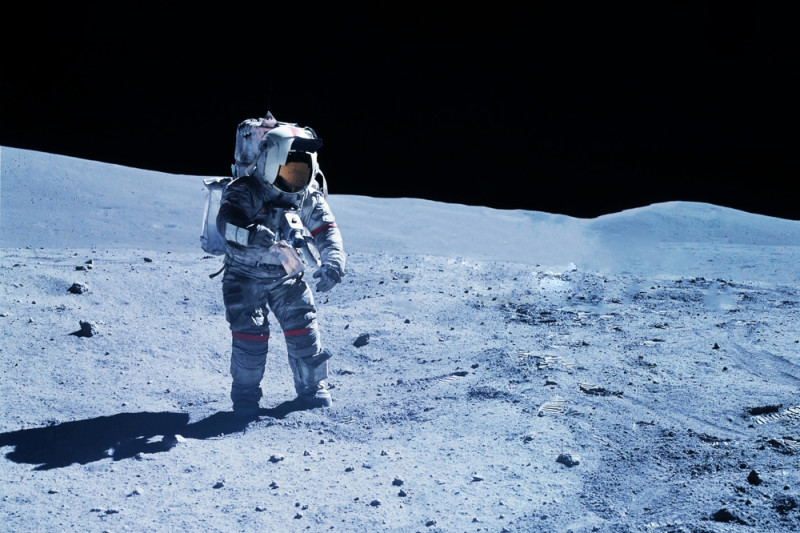After the moon landings of the 1960s and 1970s, no one was particularly trying to visit the moon. Today, however, things are different again
For decades mankind did not seem to have any particular interest in being on the moon. This period, however, is a thing of the past. Now there is movement again around the Earth’s satellite. And now it’s Japan that wants to become the fifth country to land a spacecraft on the moon. The Japanese vessel’s journey is expected to end today, Friday (January 19).
Sure, there is a risk of something going wrong – as happened with Astrobotic’s “Peregrine” boat a few days ago. “Peregrine” could have made the first private landing on the moon, but ultimately failed to land.
Despite the successes of the U.S. and the Soviet Union during the 1960s and 1970s one notices that, although technology has made leaps and bounds, today there are still repeated problems when approaching the Moon. Why is this happening;
Past experience is gone
Ulrich Walterprofessor of aerospace at the Technical University of Munich and former astronaut, parallels today’s journeys to the Moon with astronomy in the early Middle Ages. In the second case astronomy had to start again from scratchbecause the knowledge of the ancient Greeks had not been preserved until that time.
So, some of the evidence surrounding the successful moon landings of the 1960s and 1970s has been lost, while the scientists and engineers who participated then are now old or dead, so they can no longer contribute with their knowledge. “Today we are practically starting again from scratch.”
Walter believes that the failed attempts are also due to the fact that trips to the Moon are programmed with more complex software than before. This condition has advantages – for example there is greater freedom of maneuver during flight – but on the other hand there is a greater chance of software defects. “I estimate that about half of the failed lunar landings of the past years are due to software problems,” Walter says.
The Moon is a difficult target
Martin Taimar, an aerospace expert from the Technical University of Dresden, is not particularly impressed by the failed attempts of recent years. “Of course things are not going too well at the moment. But that was to be expected”. Landing on the Moon is much more complicated than putting a satellite into orbit.
Taimar knows what makes a moon landing difficult: no GPS signals to navigate the ship, gravitational pull is less, radio signals from Earth arrive with a delay, the surface of the planet is uneven, etc. That’s why “a lot of checks are required”, explains Taimar and simulations are difficult to perform accurately. That is, sometimes it is preferable to make an attempt and, after it fails, to improve the flight based on the data collected.
Will a fifth country reach the moon?
Walter emphasizes that China and India have benefited from the fact that they have been steadily developing their aerospace expertise for decades. In 2013, China achieved its first moon landing in 37 years, and two more followed. Last August, India became the fourth country to reach the moon.
Today Japan wants to become the fifth. Japan’s Jaxa’s SLIM (Smart Lander for Investigating Moon) craft is set to test a technology for precision landings, aiming to land within 100 meters of a predetermined point. Japan hopes that if the project is successful, humanity will gradually move from “landing where we can” to “landing where we want”.
The data collected on the moon will be used as part of the American Artemis programwith which NASA hopes that after 50 years it will be able to send people to the Moon again.
Why is the Moon attractive again?
According to Walter, a competition is developing between various states. China for example is putting NASA under pressure. “Americans can’t stand for China to be the first to put men on the moon.”
Taimar, for his part, points out that “the Chinese have a very consistent planning”. Under the government’s plan, the Chinese should be on the moon by 2030 – and with Artemis seriously delayed, it is not unlikely that they will actually overtake the Americans. Nevertheless, the latter also have an ace up their sleeve: Space X. “I guess the Americans will eventually manage to reach the Moon first,” says Taimar.
But why is the moon so attractive again? Financial incentives especially for private companies are important, with government agencies wanting to buy their services. The ultimate goal is for private companies to offer commercial flights to the Moon.
Anyway only over decades could the Moon have economic significance – when and if, for example, helium-3, which is considered to be present on the moon, can be used in power plants.
Edited by: Giorgos Passas
Source :Skai
I am Terrance Carlson, author at News Bulletin 247. I mostly cover technology news and I have been working in this field for a long time. I have a lot of experience and I am highly knowledgeable in this area. I am a very reliable source of information and I always make sure to provide accurate news to my readers.











